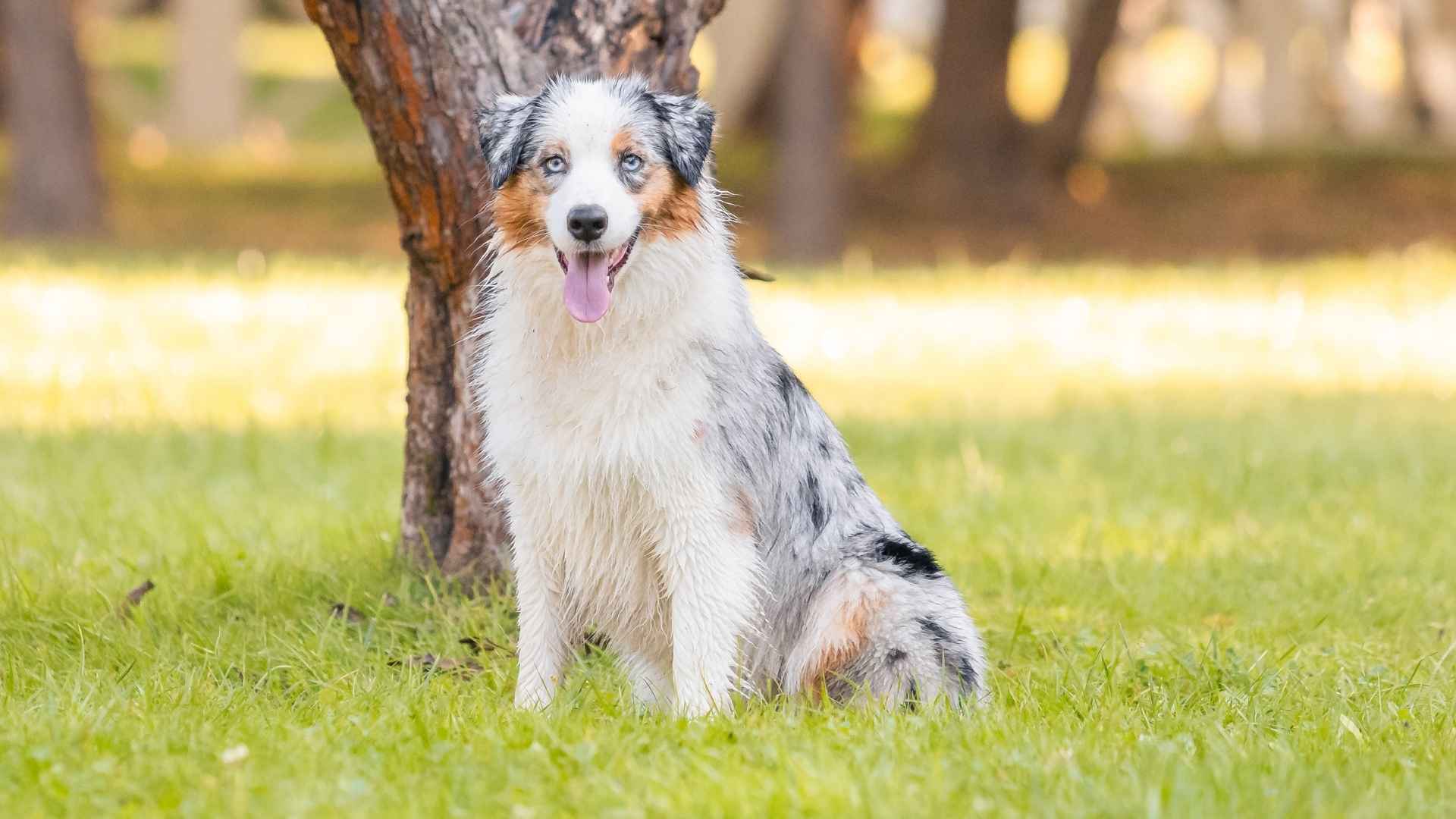Dogs bark—it’s how they communicate. But some dogs take the role of neighborhood announcer a little too seriously, while others stay oddly silent even when the doorbell rings. For many pet owners, the sweet spot lies right in the middle: dogs that speak up when it matters but don’t fill your day with background barking.
Moderate vocalization breeds are ideal for people who want a dog that’s expressive but not excessive. These dogs bark when they have a reason—whether it’s someone at the door or an invitation to play—but they’re not likely to fill every silence with their opinion.
Whether you live in an apartment, a house with neighbors close by, or just value a bit of peace and quiet, these breeds offer the best of both worlds. Let’s dive into seven dogs that know when to use their voice—and when to keep it cool.
Moderate Vocalization Dog Breeds
1. Bernese Mountain Dog
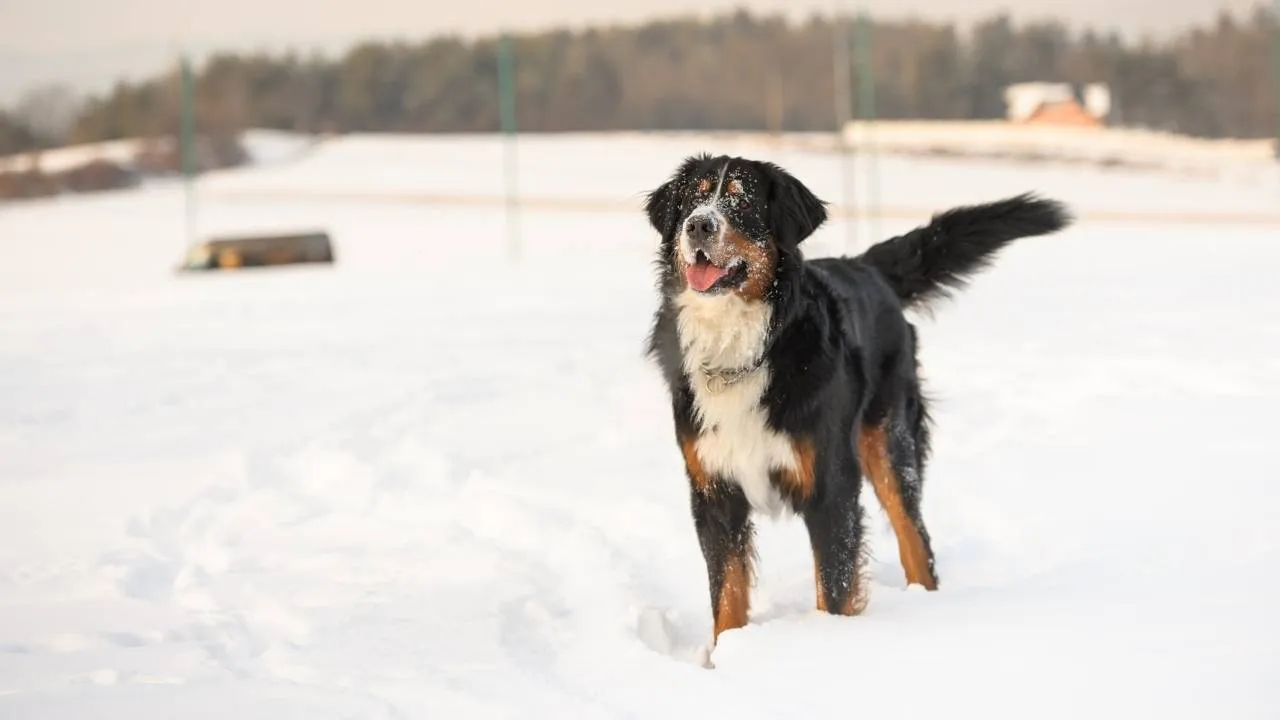
According to the AKC, the Bernese Mountain Dog is a gentle giant with a calm spirit and a heart full of loyalty. Originating from Switzerland, this breed was historically used for farm work—pulling carts and herding livestock in the Alps. That working heritage makes them steady, hardworking, and eager to please.
Though large in stature, they’re remarkably sweet and affectionate, often acting like oversized lap dogs around their families. Their patience and calm demeanor make them excellent with children, and their soft nature extends to how they communicate, with their voice and beyond.
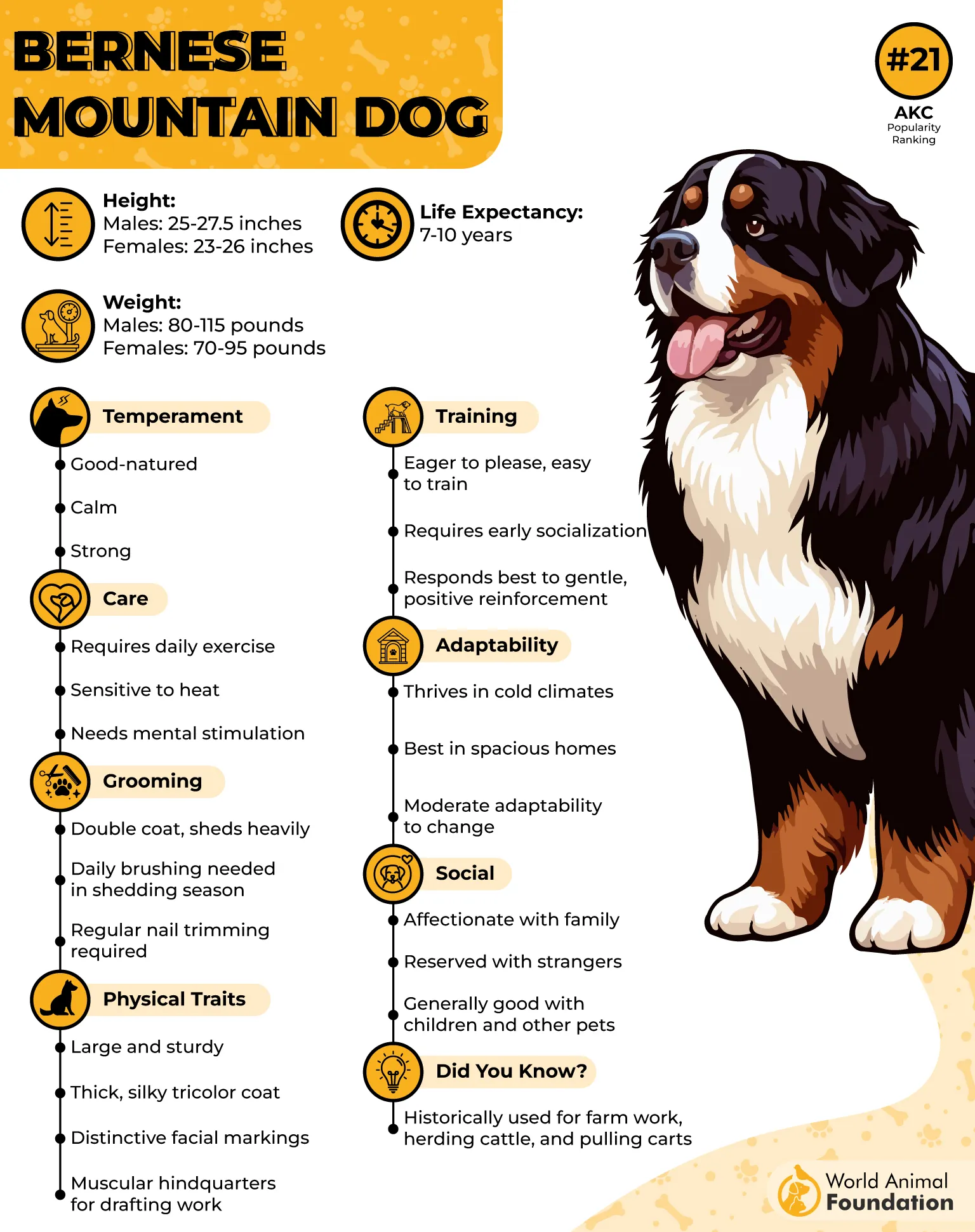
When it comes to barking, they’re generally restrained. Berners use their voice deliberately, alerting you to unfamiliar visitors or unusual situations, but rarely engaging in prolonged or excessive barking. Their deep, mellow bark can be startling at first, but they use it sparingly.
These dogs do best in homes where they have space to move and regular interaction with people. While not hyperactive, they do enjoy outdoor play, short hikes, and cold-weather activities. They’re not ideal for long periods of alone time, as they crave connection.
Grooming-wise, that beautiful tri-colored coat needs weekly brushing, especially during seasonal shedding. Combined with their serene personality and balanced vocal habits, Berners make for wonderful, composed companions.
Fun Fact:
Despite their alpine roots, Bernese Mountain Dogs are heat-sensitive and do best in cooler climates due to their thick double coat.
2. Chow Chow
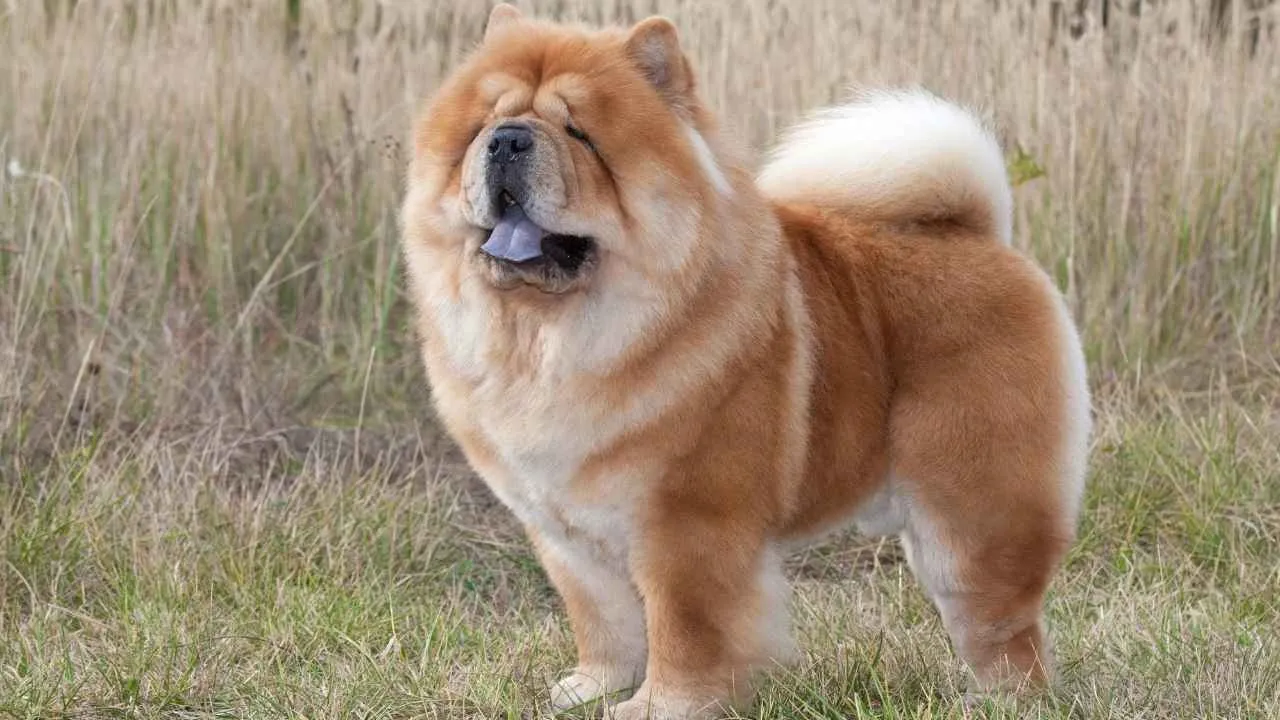
Independent and lion-like in both looks and attitude, the Chow Chow is a breed unlike any other. Its ancient origins trace back to northern China, where they served as guard dogs, hunters, and even royal companions. This history has shaped them into confident and reserved protectors.
Chows are famously aloof but deeply loyal to their people. They often bond closely with one or two family members and remain suspicious of strangers. This makes them excellent watchdogs, though not in the barking-all-day kind of way.
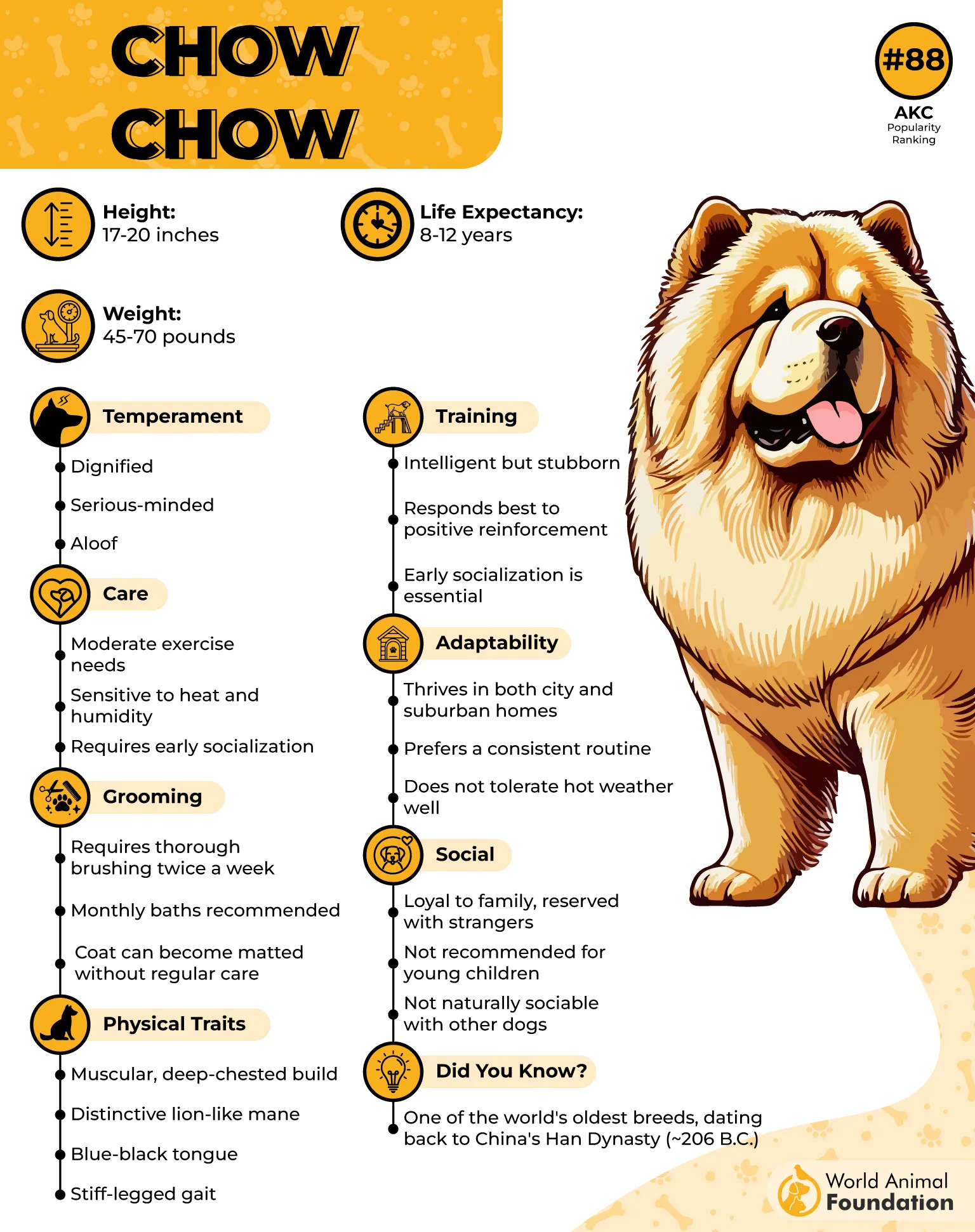
Their vocalizations are minimal, strategic rather than spontaneous. A well-adjusted Chow will only bark when provoked or alerted to something specific. They express themselves more through body language and posture than through constant noise.
Their independence can make training a challenge. Chows need a confident, consistent handler who can provide structure without harshness. Early socialization is essential to prevent overprotectiveness or reactivity in new environments.
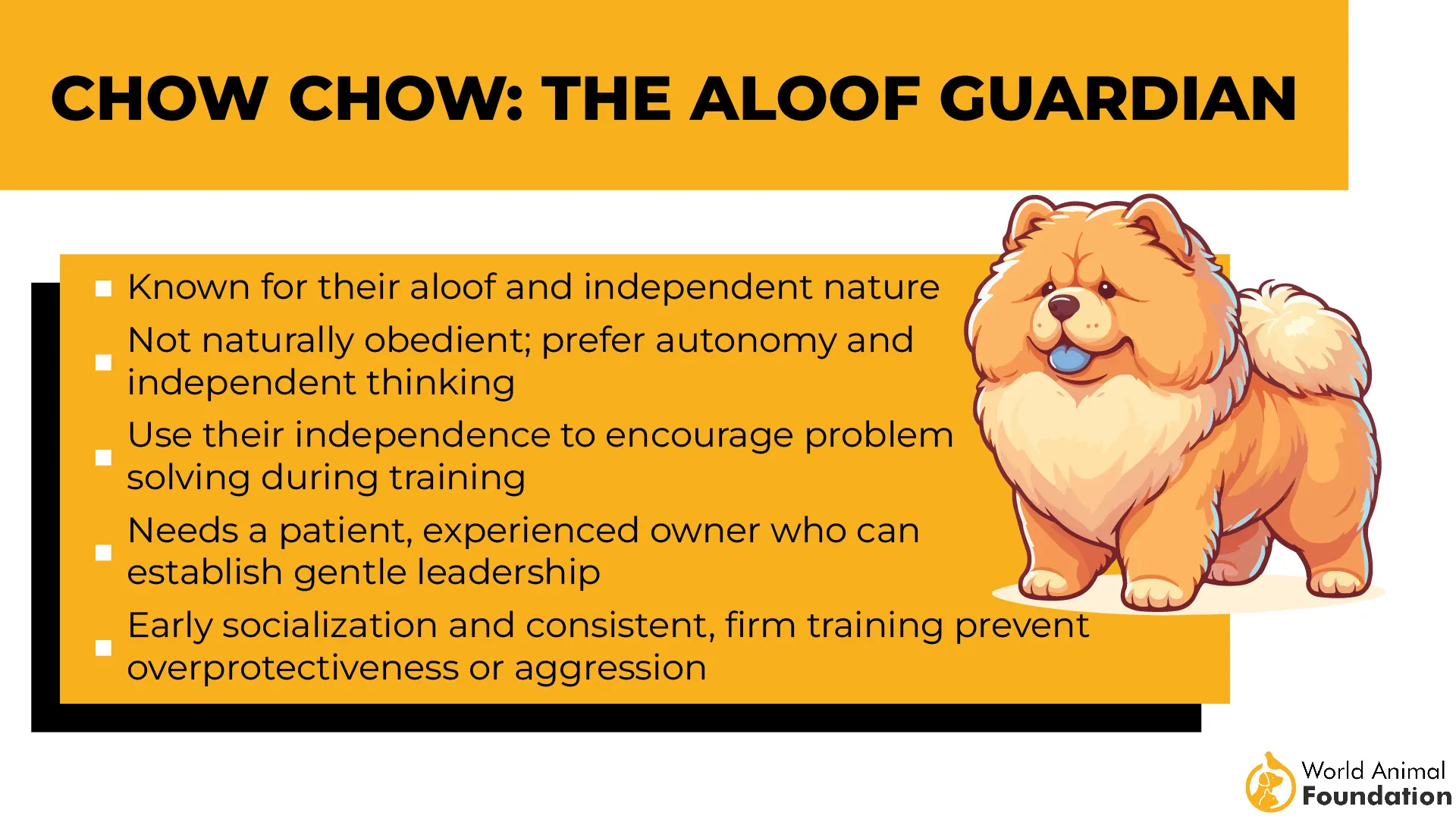
In terms of care, their thick double coat needs frequent brushing to prevent mats and keep shedding under control. Calm, clean, and quietly self-assured, the Chow Chow offers a unique mix of stoicism and strength.
Fun Fact:
Chow Chows are one of the oldest known dog breeds—images resembling them have been found on Chinese pottery dating back over 2,000 years.
3. Shiba Inu
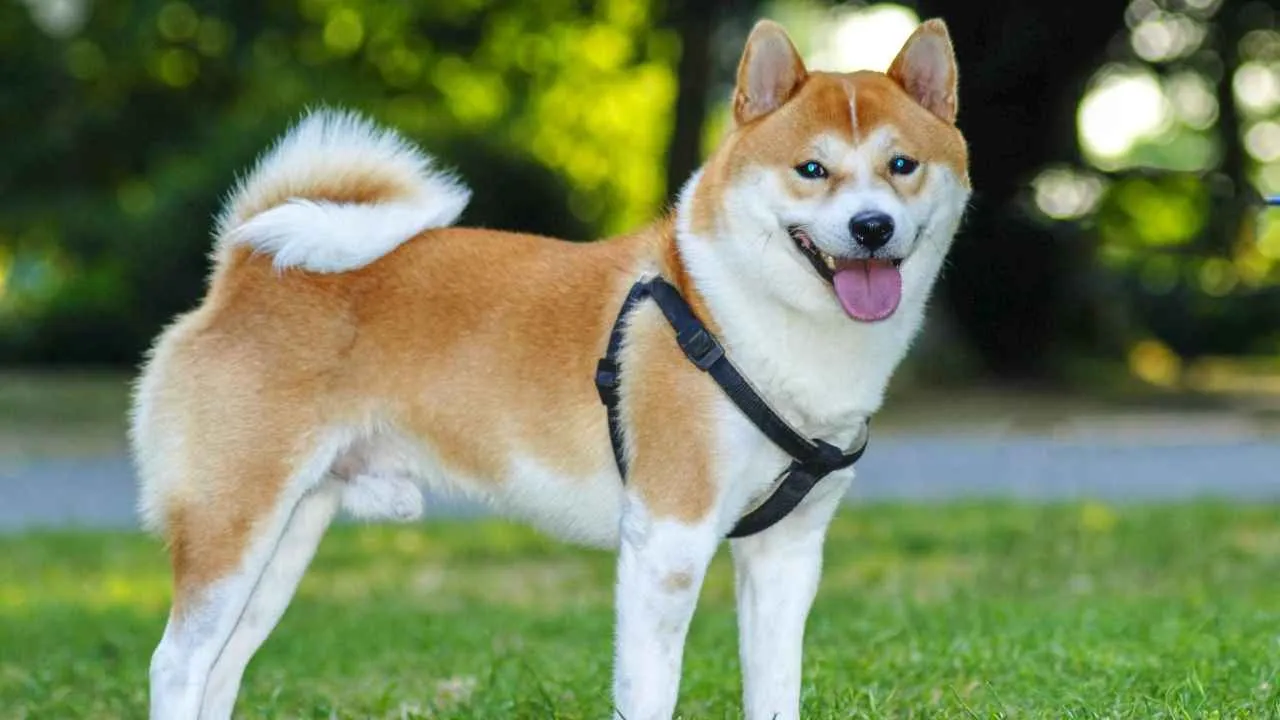
The Shiba Inu is Japan’s smallest native spitz breed, and it packs a ton of character into a compact frame. Agile, alert, and intensely self-reliant, the Shiba is often described as cat-like in behavior—clean, confident, and slightly aloof.
While they can be affectionate, they’re also fiercely independent. This means that while they may follow commands, they often do it on their own terms. They enjoy space and freedom and aren’t the type to cling to your side all day.

Their vocal style is distinct from other breeds. Instead of constant barking, they use a variety of sounds—from soft whines to the notorious “Shiba scream”—to express themselves, usually when they’re frustrated, overly excited, or being dramatic.
Shibas require firm but positive training. They respond best to consistency and reward-based techniques. Owners should also prioritize leash training—Shibas have a strong prey drive and are quick to chase if they spot movement.
Their plush double coat needs seasonal grooming and occasional brushing, especially during heavy shedding periods. With their low bark frequency, quick wit, and tidy habits, Shibas are a great fit for experienced owners seeking a quieter but spirited dog.
Fun Fact:
Shiba Inus were originally bred to hunt small game in the mountainous regions of Japan, which explains their lightning-fast reflexes and sharp instincts.
4. Australian Shepherd
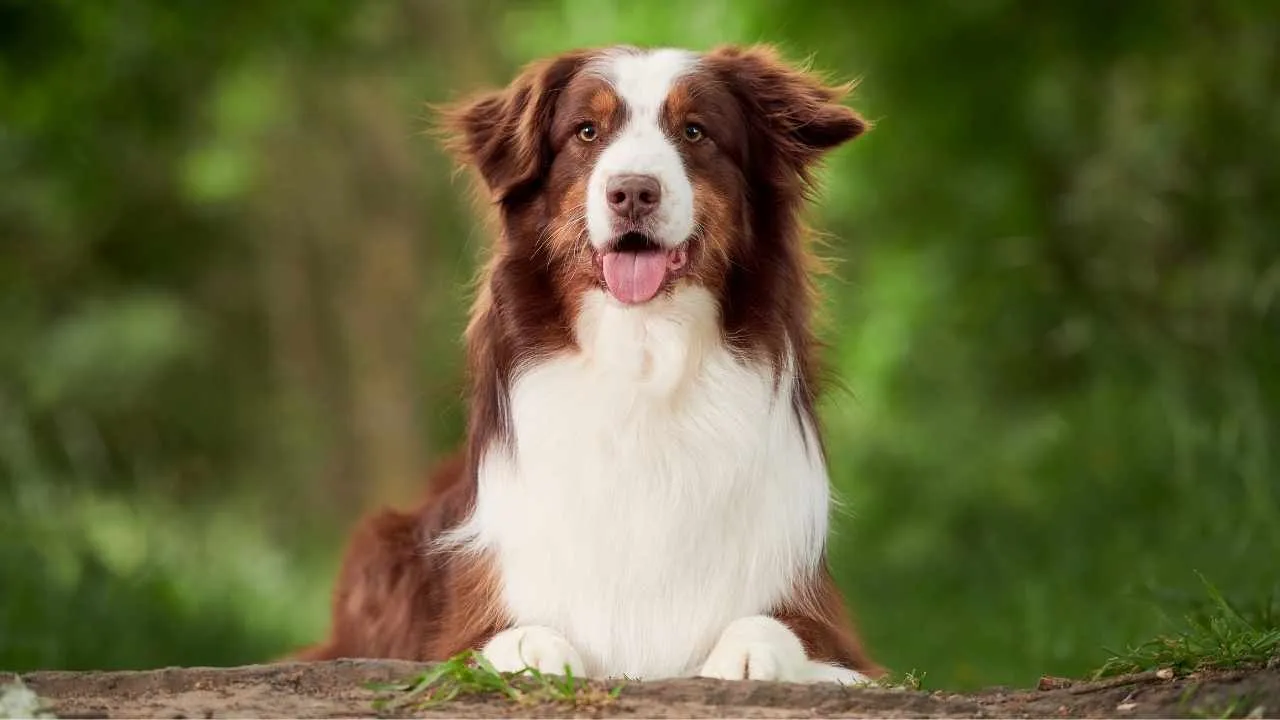
Don’t let the name fool you—Australian Shepherds were actually developed in the American West as ranch hands and herding experts. With their boundless energy, keen intelligence, and magnetic eyes, Aussies are a favorite among active families and dog sports enthusiasts.
They’re incredibly people-oriented and thrive on having a job to do, whether it’s herding livestock or solving puzzle toys. That work ethic also comes with a sharp brain—these dogs need mental stimulation as much as they need room to run.

As for vocalization, Aussies are somewhere in the middle. They’ll bark to alert, during play, or when excited—but they’re not chronic noisemakers. Training and exercise help control any tendencies toward excessive chatter.
Because of their alert nature, early training is essential to help them understand when vocalizing is appropriate. With guidance, most Aussies learn quickly and respond well to structure and positive reinforcement.
Their thick, weather-resistant coat needs regular brushing to manage shedding. With the right combination of activity, engagement, and boundaries, Aussies are joyful companions who bring both fun and moderation to your life.
Fun Fact:
Australian Shepherds often have merle coats and heterochromia—eyes of different colors—giving them a striking and unforgettable appearance.
5. Shih Tzu
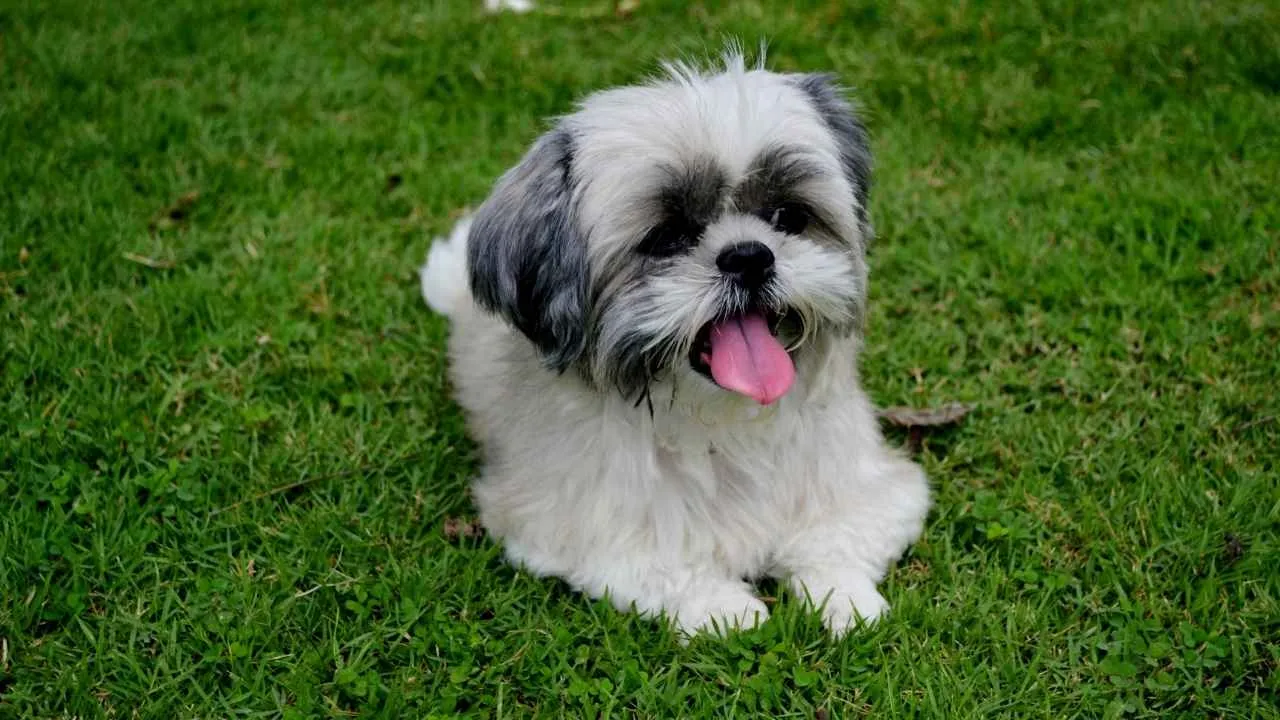
Small in size but big on charm, the Shih Tzu was bred to be a companion in royal palaces—and they haven’t forgotten it. These dogs adore being pampered and are happiest when they’re at the center of attention.
As per PetMD, they tend to be friendly with everyone and enjoy socializing. While playful and affectionate, they’re not overbearing and are often content to lounge beside you. Their easygoing nature also influences their vocal habits—they bark occasionally, usually with reason.
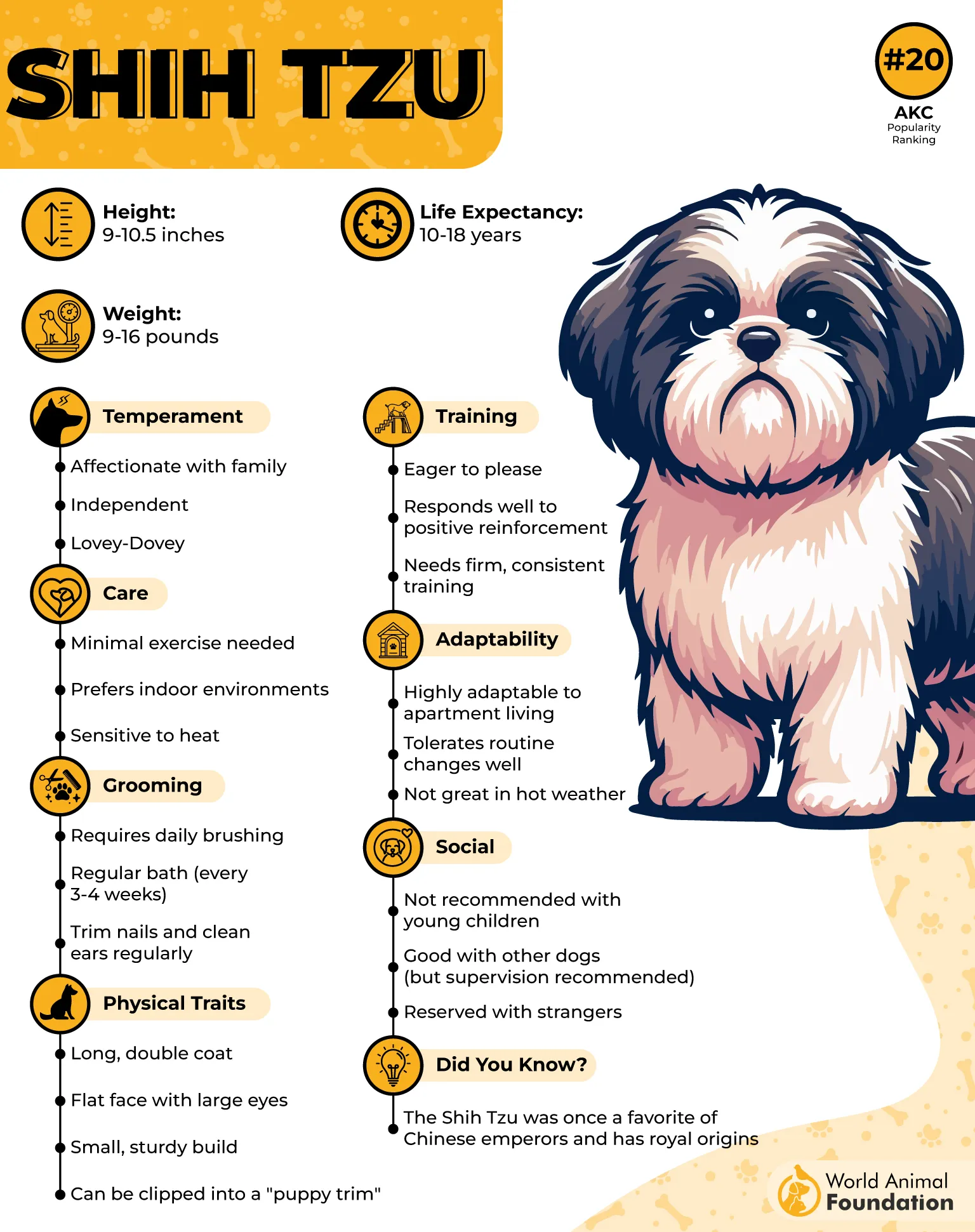
Shih Tzus will announce the arrival of a visitor or express excitement, but they aren’t yappy by nature. In fact, they tend to vocalize less if they feel secure, loved, and properly exercised.
Training is most effective when it’s gentle and consistent. They may not be eager performers, but they respond well to rewards and clear routines. Harsh discipline leads to stubbornness, while encouragement brings out their cooperative side.
Their long, flowing coat requires daily brushing or regular grooming trims to prevent matting. With a little upkeep and a lot of love, Shih Tzus make delightful, well-mannered companions in both quiet homes and lively households.
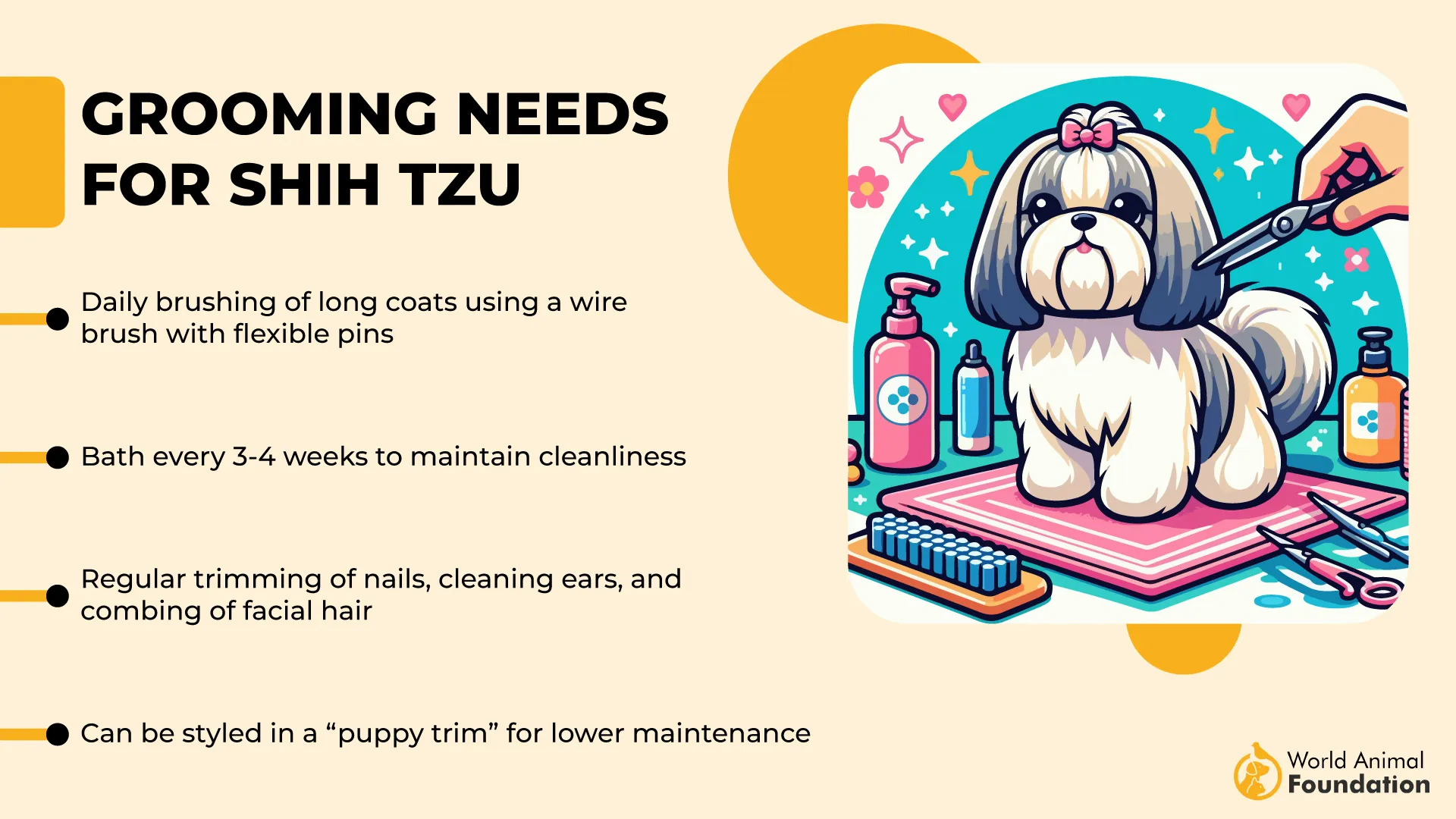
Fun Fact:
“Shih Tzu” means “Lion Dog” in Mandarin—an homage to their intended resemblance to lions in traditional Chinese art.
6. Whippet
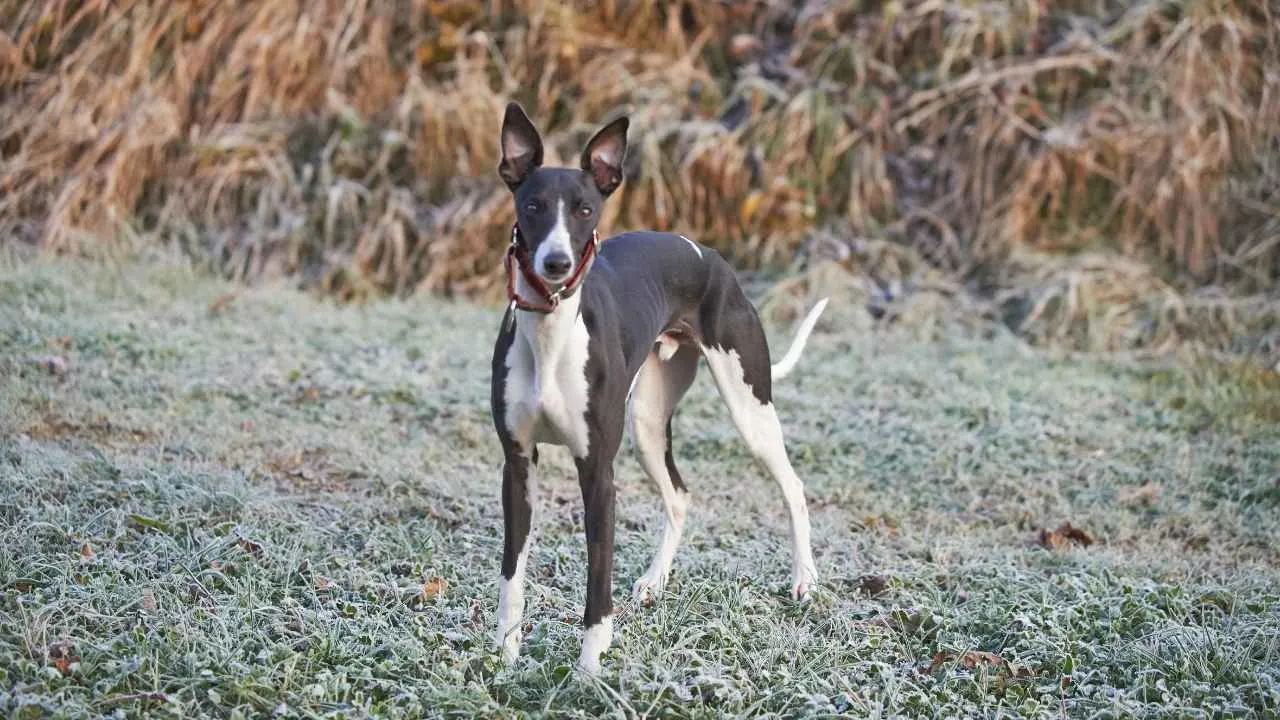
Elegant and mild-mannered, Whippets are best described as “quiet athletes.” Built for speed but blessed with a gentle disposition, these dogs are famously affectionate couch potatoes when not in sprint mode.
They form close bonds with their humans and enjoy calm, predictable environments. Their emotional sensitivity makes them easy to live with, and they rarely bark unless something genuinely startles or intrigues them.
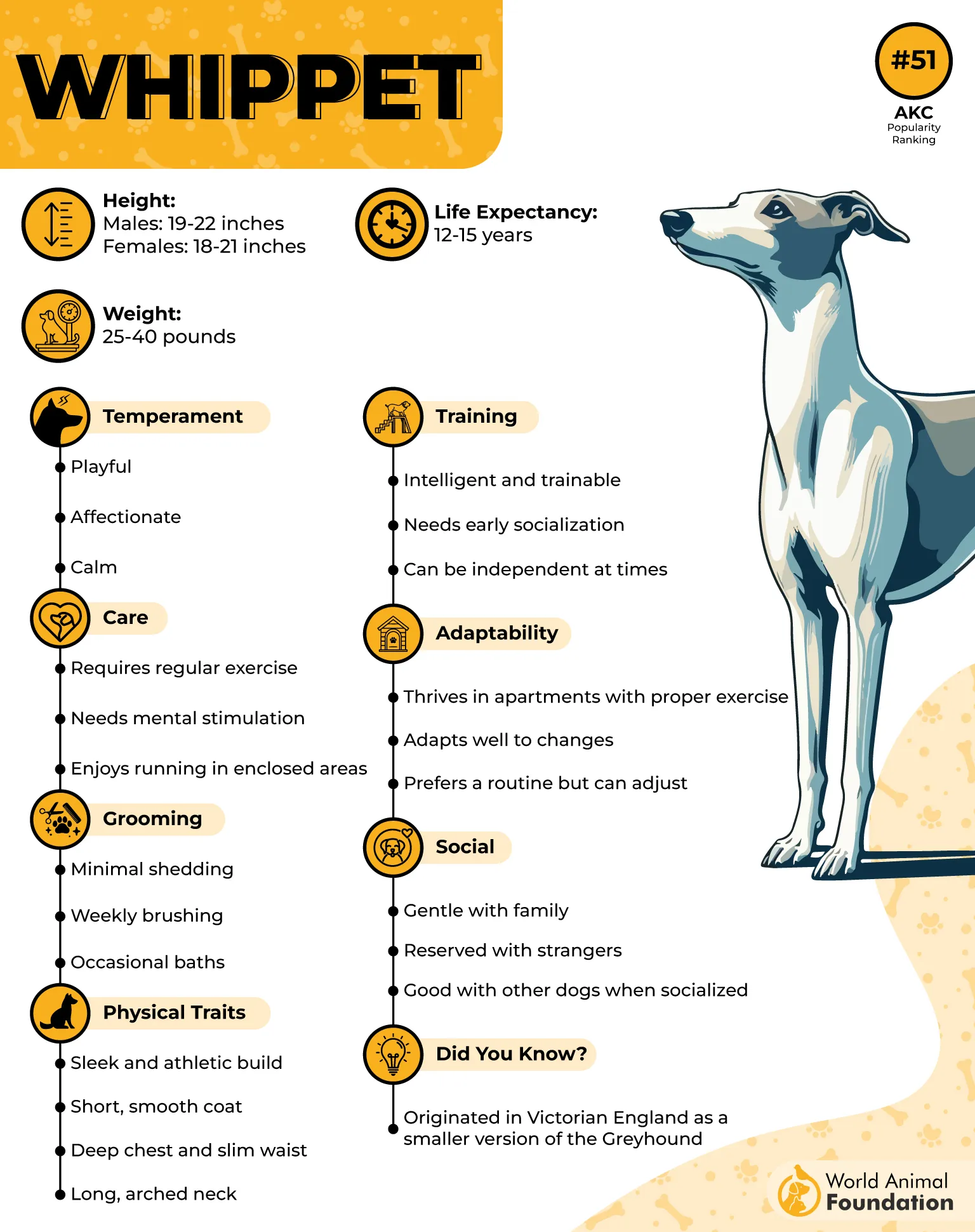
Whippets are not watchdogs, nor are they prone to dramatic displays. They express themselves subtly—through body language, soft noises, or the occasional bark—and respond well to gentle training and routine.
Daily bursts of exercise are key. While they’re not hyper, they do need the opportunity to run freely in a secure space. Once they’ve burned off energy, they’re happy to nap for hours on end.
With their short, sleek coat and low grooming needs, they’re easy to maintain. Quiet, graceful, and loving, Whippets are ideal for anyone who wants a soft-spoken companion with a dash of athletic flair.
Fun Fact:
A Whippet can reach speeds up to 35 mph, making them one of the fastest dog breeds in the world.
7. Great Dane
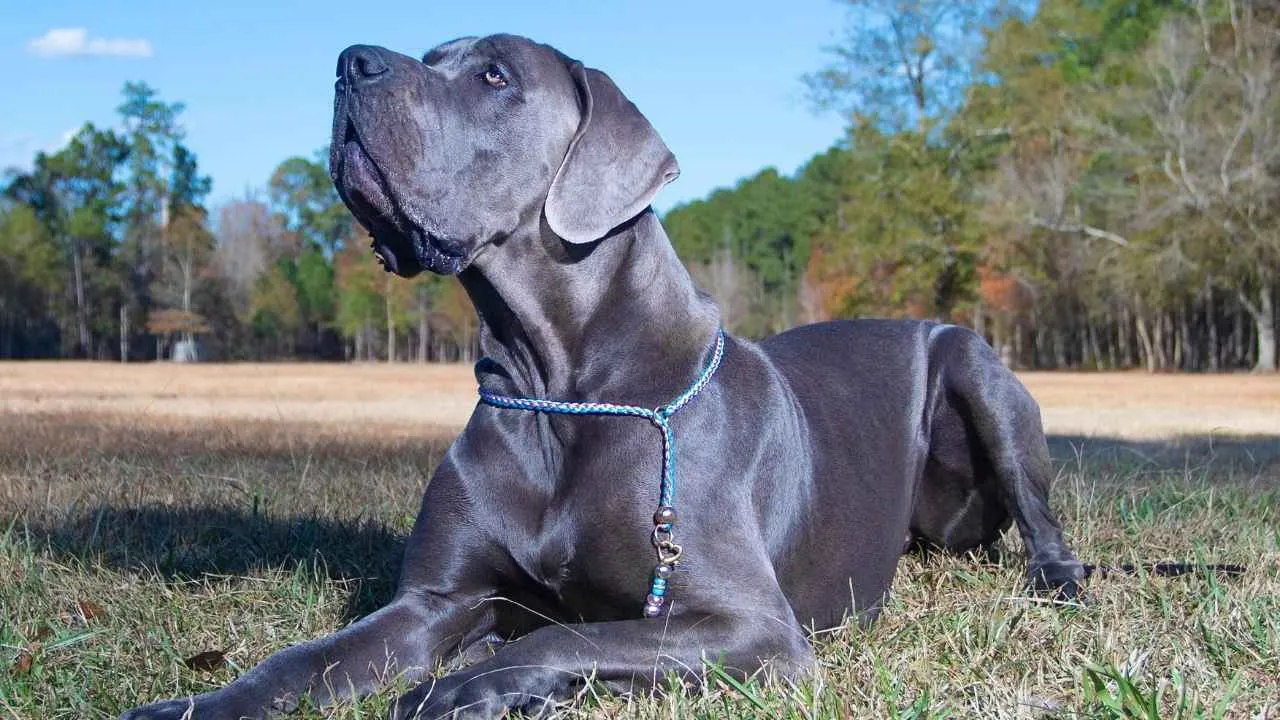
The Great Dane is known as the “gentle giant” of the dog world, and it earns that title in every sense. Despite their towering size, these dogs are famously kind, even-tempered, and often surprisingly laid-back.
As per Britannica, they’re known for forming deep bonds with their family and often prefer being in the same room as their people. While they’ll bark to alert or protect, they’re not prone to unnecessary noise, making them ideal for peaceful homes.
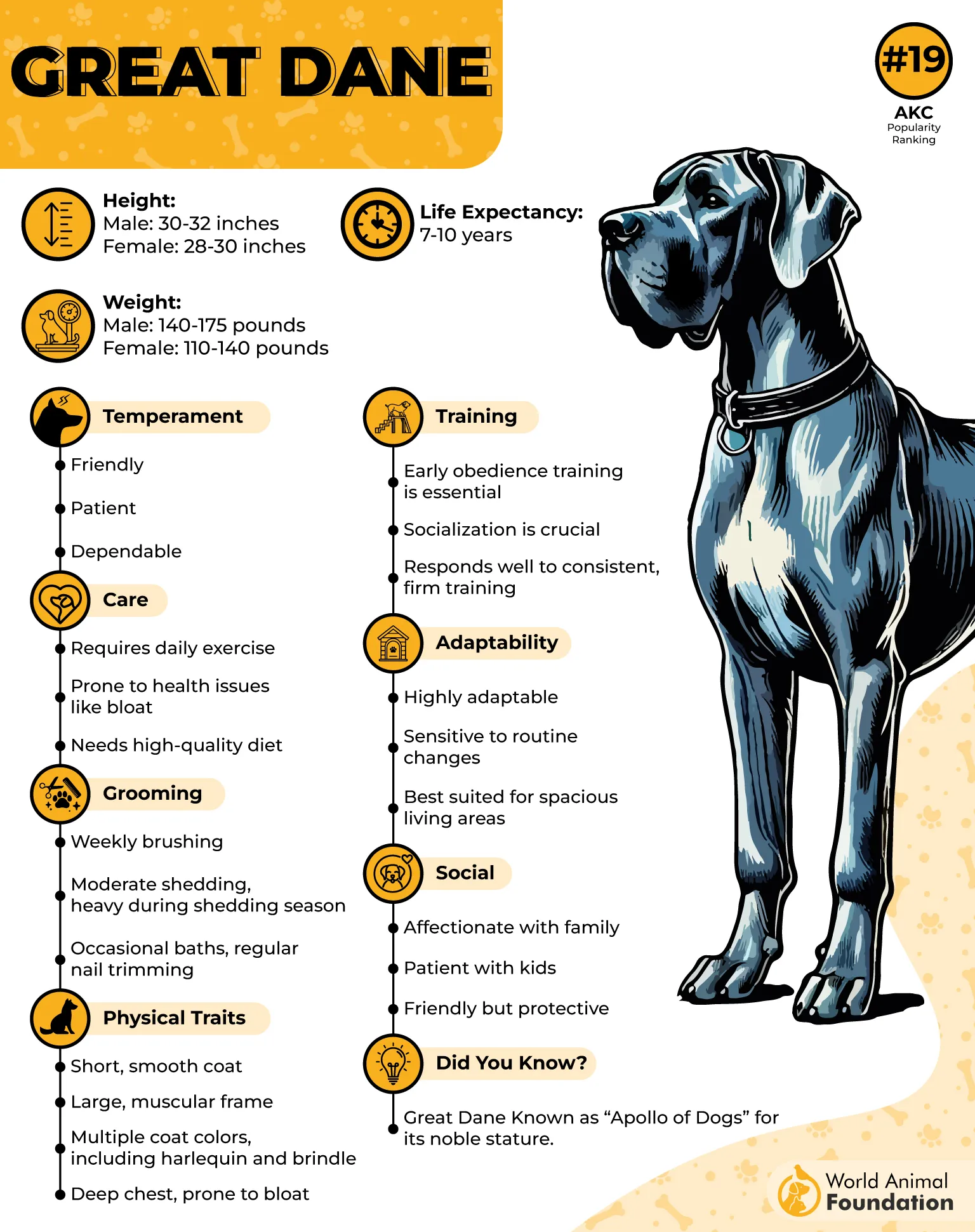
Their deep, rumbling bark can be intimidating, but it’s rarely used without cause. Most Danes are calm and patient, relying on presence rather than vocalization to communicate their needs or warn off strangers.
They need consistent training, especially early on, to ensure that their size doesn’t become overwhelming. Fortunately, Danes are eager to please and generally responsive to positive, confidence-building guidance.
Their short coat is easy to care for, though they’re known to drool a bit. With the right care and attention, Great Danes offer a perfect blend of protective instinct, quiet grace, and gentle companionship.
Fun Fact:
Scooby-Doo, the iconic cartoon dog, was modeled after a Great Dane, though real Danes are much more courageous than their animated counterpart.
Conclusion
Moderate vocalization breeds strike a great balance—they’re not silent, but they won’t drive you (or your neighbors) up the wall. If you’re done with living alongside a barking dog, these pups offer a refreshing change.
The French Bulldog and Cavalier King Charles Spaniel are perfect examples: affectionate dogs with a gentle nature, generally quiet, and known as excellent apartment dogs. Some of these breeds also come with perks like minimal grooming or a beautiful, silky coat that’s easy to maintain.
Even a more energetic dog like an Aussie can learn to keep it down with the right guidance. And for those who want near silence, a barkless dog—like the Basenji—could be just the right fit.
From peaceful companions to playful, quiet dog breeds, there’s a perfect match for every lifestyle, without all the noise.


